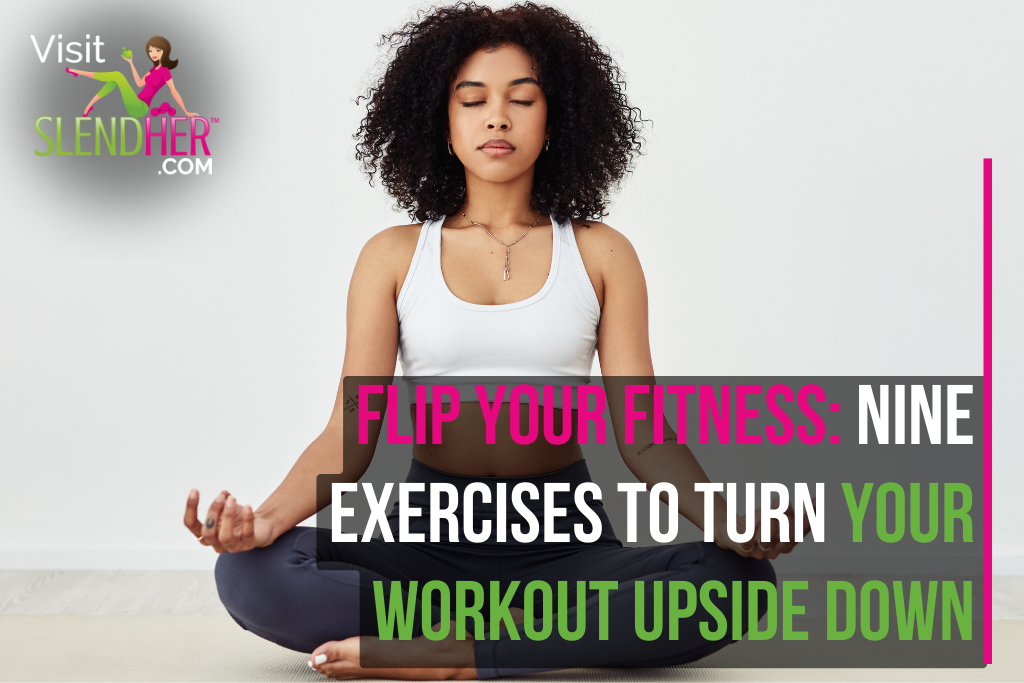

Is your exercise routine feeling…well, routine? If you made your way from weight room to water aerobics to walking and your fitness fatigue hasn’t faded, it might be time to turn your workout upside down—literally.
Inversion exercise reverses the gravitational pull that the body—more specifically, the spine and joints—is constantly under. This force from being upright can lead to pressure and sometimes pain. By flipping things over, the lack of joint pressure allows for a fuller range of motion. And beyond the body, inversion exercises can improve your focus, sleep, and mood.
Here are nine upside-down exercises to turn your routine on its head. They’re divided by skill level. Work a few in each day and see how you feel about fitness in a few weeks.
Beginner
These exercises are best used as stretches for pre- or post-workouts.
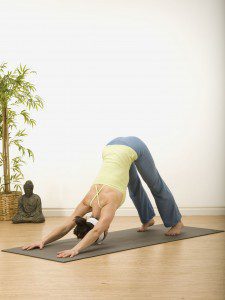
Downward dog: A staple of the yoga world, downward dog is a pose that looks like an upside down V from the side. Start on the floor with your hands below your shoulders, fingers spread wide, and knees beneath your hips. Curling your toes under, exhale out as you push your hips into the air. Lengthen your tailbone away from your shoulders and sink your chest toward your feet. Keep your neck neutral and your knees slightly bent until you are warmed up enough to straighten your legs. Hang out here for five breaths. Come out of the pose onto your knees. Repeat three times, increasing your stretch each time.
Legs up the wall: This supported pose is a great meditation posture. Place a thick towel or bolster about six inches high up against a wall. Place your lower back on the prop with your butt up against the wall. Your legs should go straight up the wall as you lie on the floor with your arms spread open. It’s a tricky pose to get in and out of, but once you do it’s pure stress-free bliss.
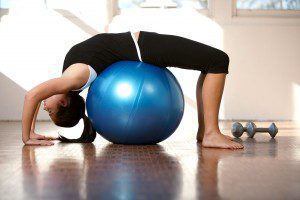 Stability ball back extension: If you’re one who sits in front of a computer for hours on end, this inversion will be great for opening your chest after being hunched toward a keyboard. Sitting on a large exercise ball, walk your feet out so that you are lying on the ball. Keep your feet on the ground to support your balance. Once steady, raise your arms up and overhead and rest your weight in your heels. Breathe in this position for five breaths before walking your body back to a seated position. Repeat two or three times.
Stability ball back extension: If you’re one who sits in front of a computer for hours on end, this inversion will be great for opening your chest after being hunched toward a keyboard. Sitting on a large exercise ball, walk your feet out so that you are lying on the ball. Keep your feet on the ground to support your balance. Once steady, raise your arms up and overhead and rest your weight in your heels. Breathe in this position for five breaths before walking your body back to a seated position. Repeat two or three times.
Intermediate
These exercises are good skill and strength builders.
Pike against the wall: If you’re not quite ready for a full headstand, meet in the middle with this pike stance. Go into a downward dog pose with heels up against a wall. Slowly walk your feet up until your body makes a 90-degree angle. (Note: You may need to move closer or further from the wall to get in the right position.) Work on holding this pose for five seconds, then ten, then 15, and so on.
Supported shoulder stand (skip this exercise if you have neck problem): Lie on a mat with your arms at your side, palms to the floor. Roll your knees into your chest and push your legs straight overhead so that your back is off the floor and the weight rests in your shoulders. You can bend your arms so that your hands support your lower back, or you can leave your arms at the starting position. Take five deep breaths here, then slowly roll back into a flat position.
Decline dumbbell fly: Decline weighted exercises are done on a bench where your knees are higher than your shoulders and your ankles are secured. In a decline position, hold two dumbbells with straight arms together above your heart. With your palms facing each other, let your arms open wide and your elbows bend slightly until you feel a stretch in your chest. Repeat the rep by returning the weights to the starting position. Do two rounds of ten to twelve reps at a light weight.
Advanced
Show gravity what you’re made of with these exercises!
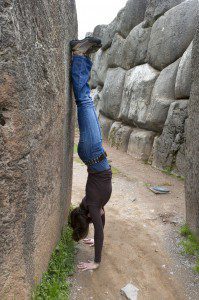
Handstand push-up: With your hands slightly wider than shoulder-width and just inches on from a wall on the floor, kick your legs hard and rest your heels against the wall. Once stable, bend your elbows so that your head drops toward the floor. Then push up to the starting position. If you are not ready to touch your head to the floor, place a yoga block or prop target to dip toward.
Decline bench press: Following the same setup as the decline dumbbell fly, place your hands on a barbell so that they are just about shoulder width or a little wider. Lower the bar to touch your chest then explode the bar back up to a starting, straight-arm position. Begin with a weight that is light for you. If necessary switch to dumbbells. Do three sets of eight to ten reps.
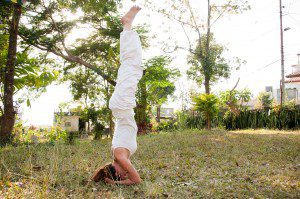
Headstand against wall: Place a mat against a wall. In a kneeling position, place your fingertips at each elbow to determine how wide your elbows should be. Separate your arms, leaving you elbows in place. Clasp your hands and curl your toes under, pushing your hips up as you did in downward dog. Drop your head between your forearms so that the crown of your head is firmly on the ground. Walk your toes toward your head and kick your legs up against the wall, resting your heels on the wall. Hang out in this position for ten breaths or so.
Being upside down may feel odd at first, but with a little practice you won’t even notice–outside of the benefits, that is. Do you have a favorite flipped exercise? Tell us about it!
[adform]
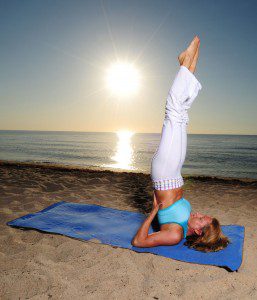

Leave a Reply